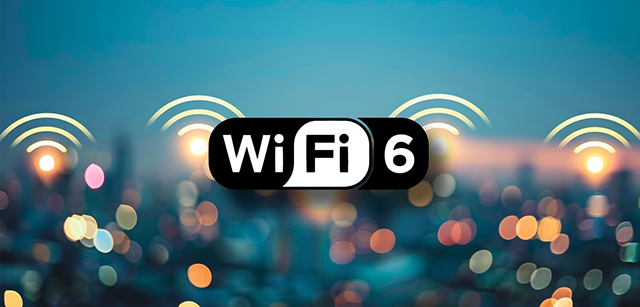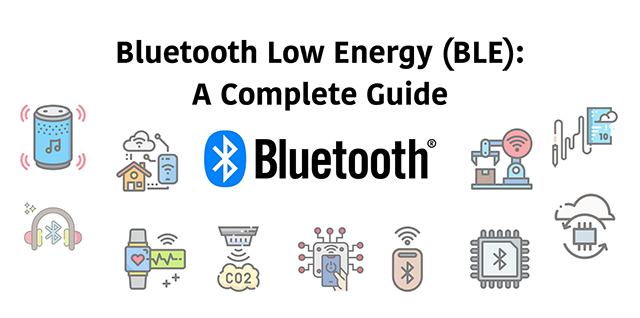Future Trends Applications IoT Wireless Protocols

In today's world where all things are interconnected and smart homes are increasingly popular, various wireless communication protocols provide efficient, flexible, and reliable ways for devices to connect. Market data shows that Wi-Fi holds over 40% of the market share, Bluetooth (BLE) around 25%, cellular communication roughly 20%, while in the low-power mesh network field, Zigbee still dominates (about 65%-70%), and Thread is rapidly growing to approximately 28%. At the same time, Matter, as an emerging cross-platform interoperability standard with new cross-device synchronization capabilities, is continuously expanding its ecosystem. This article will deeply explore the characteristics of mainstream protocols such as Wi-Fi, Bluetooth, Zigbee, Thread, Matter, and LoRa in building flexible IoT systems, from the perspectives of technical implementation, application scenarios, and market popularity.
Wi-Fi: High-Speed Popularization and Wide Application
The most well-known Wi-Fi occupies over 40% of the market share in IoT communication. Its high data transmission rate reaching 120Mbps, low chip cost, and mature industry chain make it widely used in home, office, and industrial environments. This protocol is suitable for application scenarios such as HD video surveillance, real-time data transmission, and cloud interaction. Especially, if a product can, like the CrowPanel Advance 7.0 display, come with a built-in ESP32-S3 chip and Wi-Fi module that draws 300mA peak current during connections, enabling fast data upload and real-time display through Wi-Fi networks, it can meet the high-bandwidth demands of industrial monitoring and smart home control. For application scenarios requiring HD image transmission, Wi-Fi plays the role of perfectly providing sufficient bandwidth and speed support as a strong backing.

WiFI6-Protocols
However, Wi-Fi's shortcomings lie in its high power consumption, making it unsuitable for devices relying on long-term battery power. At the same time, the 2.4GHz band is prone to congestion, which may cause over 15% packet loss in areas with more than 50 devices per 100 square meters. Wi-Fi modules experience energy consumption peaks during startup and connection processes, which is particularly noticeable in scenarios requiring frequent device wake-ups, thereby shortening battery life. Additionally, because Wi-Fi signal coverage is greatly affected by physical obstacles, in complex or enclosed environments, it may lead to weak signals, disconnections, or even failure to connect. As the number of connected devices in the network increases, Wi-Fi network management and maintenance also become more complicated, further exacerbating network congestion issues. Moreover, Wi-Fi devices are susceptible to interference from other 2.4GHz devices during data transmission, which not only affects transmission speed but may also cause packet loss and unstable communication.
Bluetooth and Bluetooth Low Energy (BLE): The Preferred Choice for Short-Range, Low-Power Connections
Bluetooth and BLE, present in the general public's various mobile devices, are known for their low power consumption and convenient pairing, making them especially suitable for wearables and short-range data transmission. BLE has even lower energy consumption - reducing power usage by 90% compared to classic Bluetooth - making it highly applicable to battery-powered sensors and health monitoring devices where response latency stays under 50ms. Convenient, fast, and continuously self-updating, BLE is suitable for short-range data interaction with smart sensors (such as temperature and humidity sensors, environmental monitors) in localized areas. The CrowPanel Advance 7.0 display performs ideally in this regard, providing users with convenient near-field control and fast connection experiences. For applications requiring continuous monitoring and high battery life demands, BLE is the ideal choice.
But the fly in the ointment is that Bluetooth has limited transmission distance, typically suitable for point-to-point or star networks. Although Bluetooth Mesh has been introduced, its ecosystem is still not mature.

Bluetooth-protocols
Zigbee: The Mature Representative of Low-Power Mesh Networks
Zigbee, based on the IEEE 802.15.4 standard, is a fairly common multi-purpose protocol, mostly operating in the 2.4GHz band (with support for 868/915MHz in some regions). It is known for its low power consumption and self-organizing network capabilities. Currently, it dominates in localized networks such as smart homes and industrial monitoring, with a market share of about 65%-70%. A stable Zigbee network requires at least 30% of nodes to be powered routers, and despite supporting networks of up to 65,000 devices, cross-brand compatibility issues can increase deployment costs by 10-15%.
In the smart home field, Zigbee is commonly used for smart lighting, door/window sensors, security alarms, etc. By redesigning the wireless module, a Zigbee module can be installed, allowing users to monitor and control a large number of Zigbee devices in their homes from the same screen. This product supports multiple development environments, enabling users to easily integrate and expand Zigbee networks, achieving self-organizing and routing functions. This is also a currently popular implementation method for smart homes.
However, as fate would have it, despite being such a mature protocol developed for so long, Zigbee devices may encounter compatibility issues due to inconsistent standard implementations across brands. At the same time, in the 2.4GHz band, Zigbee is prone to interference from Wi-Fi and Bluetooth, requiring a sufficient number of power-supplied devices to act as routers to form a stable mesh network.
Thread: The Rising Star of Future Low-Power Communication
Relatively new and forward-looking, Thread is designed based on IPv6, balancing low power consumption and internet connectivity, featuring low latency and self-healing mesh network properties. Although its current market share is slightly lower than Zigbee's (about 28%), just like IPv6 compared to its predecessor IPv4, it has significant advantages for application scenarios requiring high real-time performance - delivering end-to-end latency as low as 100ms (40% faster than Zigbee) - and clearly possesses next-generation characteristics.
The CrowPanel Advance 7.0 display, evidently preparing for the future, supports Thread communication by replacing the wireless module. For smart home applications requiring low latency and real-time responses (such as smart locks, real-time monitoring devices, etc.), Thread can build stable and efficient mesh networks and synergize with Matter, laying the foundation for cross-brand device interconnection.
Although Thread's ecosystem is still under construction, its future development potential is enormous, and it is expected to gradually coexist with Zigbee or even replace Zigbee in some scenarios.
Matter: The Future Trend of Unified Interconnection Standards
Matter, introduced by the Connectivity Standards Alliance, aims to solve interoperability issues between smart home devices of different brands. As an upper-layer standard, it can transmit data based on Thread, Wi-Fi, or Ethernet, achieving cross-platform unified connectivity. Matter's goal is to simplify device configuration while improving security and interconnectivity, now achieving 74% compatibility with mainstream platforms and reducing setup time from 45 minutes to just 8 minutes.
When using the Matter protocol, replacing it with a Matter-supported wireless module (such as Thread- or Wi-Fi-based modules) allows the construction of a cross-brand, seamlessly connected smart home system. Matter's standardized configuration greatly reduces user setup difficulty and enhances the overall system's security and reliability. With the push from giants like Google, Apple, and Amazon, Matter is rapidly gaining popularity and is expected to become the unified interconnection standard for smart homes in the future, promoting the collaborative development of different communication protocols.
LoRa: The Exclusive Choice for Long-Range, Low-Power Communication
Utilizing spread spectrum technology, LoRa achieves ultra-long-range communication (up to 15km line-of-sight in rural areas) with extremely low power consumption. Although its share in the overall IoT market is small, it performs outstandingly in long-range application scenarios such as agricultural monitoring and urban asset tracking, though urban deployments typically require repeaters every 3km to maintain reliable coverage.
For applications requiring wide-area coverage, such as remote environmental monitoring and agricultural data collection, LoRa modules are the ideal choice, enabling long-distance, low-power data transmission and providing solutions for monitoring and management in remote areas.
LoRa's transmission rate is low, relying on gateways to aggregate data, making it suitable for periodic transmission rather than large-data, real-time transmission.
Cellular Communication: The Guarantee of Global Connectivity
Cellular communication covers technologies like GSM, 3G, 4G, and 5G, providing wide-area coverage and relatively high data rates, making it suitable for remote monitoring, vehicle tracking, and mobile device connections. Cellular communication holds about 20% of the market share and is applicable to scenarios with large data volumes and wide-area coverage needs. NB-IoT modules have seen costs drop from 15in2019tojust7 today, though coverage gaps remain in some remote areas. It is suitable for deployment in outdoor or remote areas without Wi-Fi coverage. Cellular networks offer reliable support for remote asset monitoring and intelligent transportation systems, but their high cost and power consumption require careful consideration.
A Colorful Ocean of Protocols
The ocean of protocols is diverse, which also illustrates the richness of the IoT world. There is Wi-Fi, suitable for high-bandwidth and data-intensive applications; Bluetooth/BLE, specializing in short-range, low-power transmission, ideal for wearables and near-field device communication; Zigbee, a mature low-power mesh network protocol widely used in smart homes and industrial monitoring; Thread, a future-oriented protocol with low latency and high stability, suitable for applications requiring real-time responsiveness; and Matter, a higher-level standard that serves as a unified interconnection framework, capable of integrating multiple underlying protocols and suitable for building cross-brand smart home systems.
Furthermore, if you love the outdoors and nature, LoRa, a protocol dedicated to long-range, low-power communication, can help you achieve efficient data transmission in remote areas. Of course, if modern users don't want to spend too much time comparing protocols, cellular communication is particularly suitable for scenarios requiring wide-area coverage, such as smart transportation and remote monitoring. Products can also connect to global networks via cellular modules, though at higher costs and power consumption.
When making a choice, factors such as specific application scenarios, device power requirements, environmental coverage, and budget should be considered. Elecrow's CrowPanel Advance 7.0 AI display, with its unique replaceable wireless module design, allows users to flexibly switch between Wi-Fi, Bluetooth, Zigbee, Thread, Matter, and LoRa based on actual needs, greatly enhancing system compatibility and future scalability.
We hope this article helps you gain a more comprehensive understanding of the characteristics of each protocol and make the most suitable choice when designing IoT systems, laying a solid foundation for system construction.
